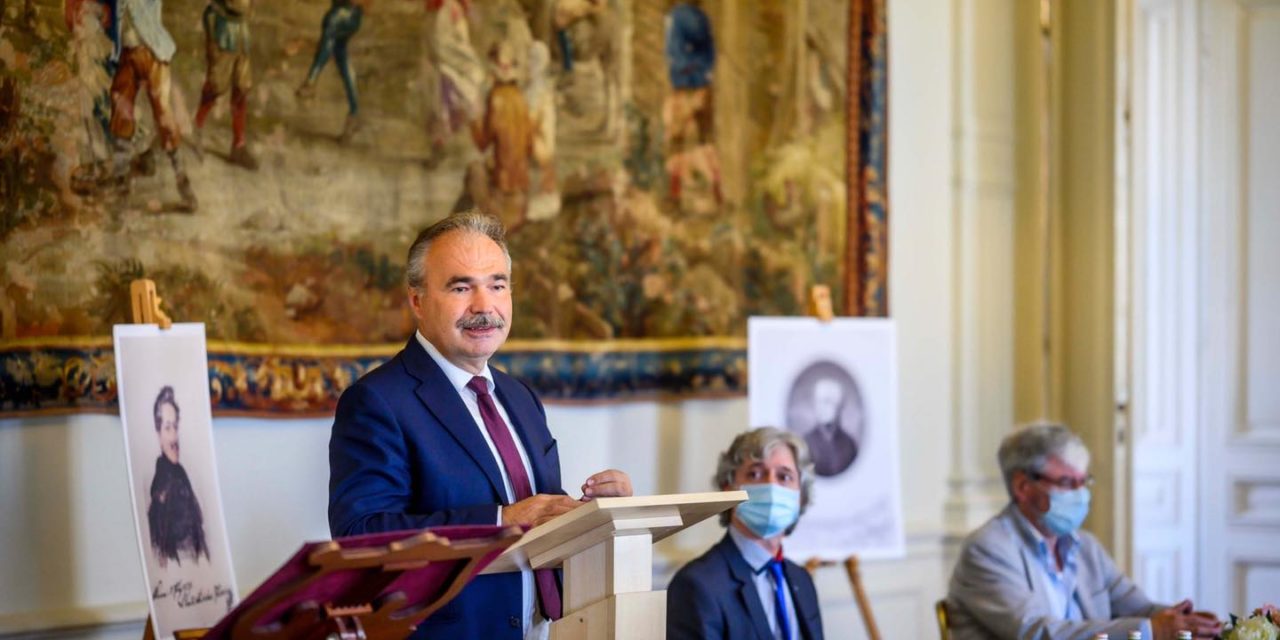New elements have been added to the Collection of Hungarikumok and the Hungarian Stock Exchange - Minister of Agriculture István Nagy announced on Tuesday at the press conference following Tuesday's meeting of the Hungarikum Committee.
He said that in addition to the 79 hungaricum so far, three new ones were added according to the committee's decision: the paprika from Szentes, the Hungarian cifraszür and the traditional head trees in the Carpathian basin. István Nagy emphasized that Hungarians recognize Hungarian values and the outstanding achievements of Hungarians.
Regarding the entry of the Szentes paprika into the Hungarikum Collection, he explained that the production of edible peppers has been a defining activity in the Southern Great Plain region for decades. It has been sold as a protected product under the name "Szentes paprika" since the spring of 2014. The European Commission then declared the name a protected geographical indication. The protection covers white stuffed peppers, pointed strong peppers, capia peppers, and tomato-shaped peppers. The minister added: Bulgarian gardeners also played a significant role in the development of production culture. It is a tribute to their work that the paprika from Szentes was included in the Hungarian Collection.
According to the Minister of Agriculture, the Hungarian Cifraszőr is a type of jacket that is not only one of the most beautiful pieces of Hungarian folk clothing, but also a national symbol. According to his description, the previously gray clothing dates back to the 19th century. In the 19th century, it was revived, became decorative, literally "bloomed". Cifrafilter has become a must-have item for weddings. In fact, in some places, they could only go to girls' houses in plain clothes. The young man forgot the handsome cloak as if by accident at the place of his courtship, and whoever hung his filter on the porch in the morning had to look for another girl's house, reminded István Nagy.
The minister highlighted the traditional head trees in the Carpathian Basin in connection with Hungarian culture, as Hungarians traditionally set up wooden grave markers in their cemeteries. The warrior had a headstone, which was an ornately carved holder for his spear stuck in his tomb. With the disappearance of the spears, everyone was beheaded. The XVIII. In the 19th century, these grave markers are mentioned in the writings as "wood for the head" and "wood from the head", which mainly mark the graves in Protestant regions. Where the national consciousness of the Hungarians remained strong, the old head trees are preserved and cared for to this day, but even new ones are added to the cemeteries. The carved head trees in the graves are splendid evidence of the presence of the Hungarians in the Carpathian basin, explained István Nagy.
Zsolt Németh, the ministerial commissioner responsible for the supervision of outstanding national values, said that according to the committee's decision, three outstanding national values were added to the Hungarian Valuables. Among them is Hungarian carriage and cogwheeling, whose culture is world-renowned and is not only a national cultural asset, but also boasts a system of tools and style elements that are unique in the world. In addition to the historical importance of the castle and fortress system in Komárom, it is also an architectural creation that is the only outstanding element of Central European fortress construction. The tradition of the cart owners of Komárom, which is still alive today, was also included in the Hungarian Valuables Archives, said the ministerial commissioner.
Source: Sunday













